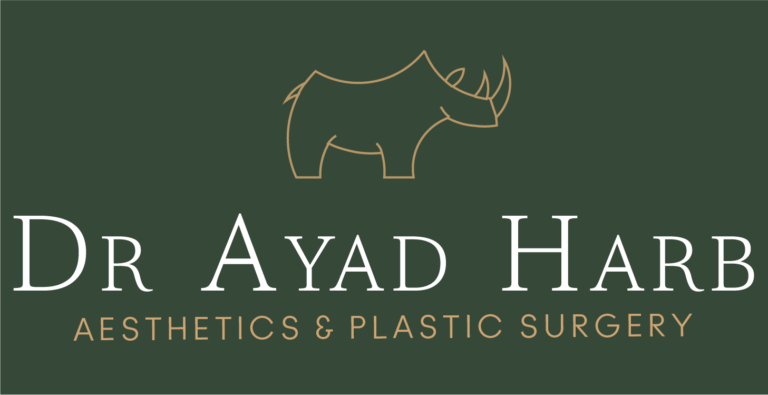Brow lift, also known as eyebrow lift and forehead lift, is surgery to reposition the eyebrow up to a more youthful position.
Brow lift counteracts the effect of gravity on the ageing eyebrow position. Brow lifts can also be used to correct asymmetrical brow positions or to help treat a drooping brow due to a nerve weakness. Brow lift has an anti-ageing effect on the eye area, giving a fresher, more rejuvenated appearance to the face. It counteracts the tired or heavy look around the eye area very effectively.
What can a brow lift achieve?
- Raises sagging brows that are hooding the upper eyelids
- Places the eyebrows in an alert and youthful position
- Improves symmetry and restores eyebrows to a more natural position after nerve injury
What procedures is a brow lift combined with?
Other cosmetic procedures that may be performed with a brow lift include:
- Upper and or lower eyelid surgery (blepharoplasty)
- Facelifting
- Skin resurfacing techniques
What are the indications for a brow lift?
As we age, skin relaxation may cause the eyebrows to drop, hooding our upper eyelids and making us look tired. If you are bothered by these signs of aging in the brow region, a brow lift may be an appropriate procedure to consider. The main indications for brow lift surgery are:
- Low lying eyebrow position or brow ptosis causing hooding of skin over the upper eyelid
- Asymmetrical eyebrow positions with one eyebrow lying lower than the other
- Weakness of the nerve to the eyebrow muscles resulting in drooping of the eyebrow over time
What are the limitations of brow lift surgery?
- If there is extra skin on the upper eyelid as well as a low eyebrow position, then this will not be treated by a brow lift alone. An upper blepharoplasty or eyelid lift is needed as well in this situation to treat the excess tissue. The two procedures can be combined together very successfully.
- Some types of brow lift will not affect the “frown lines” that form between the eyebrows. However, these can be very effectively treated with botox injections.
Types of Brow Lifts by Dr Ayad
There are several types of brow lifts available. Each can be carried out on its own or in combination with other procedures such as upper blepharoplasty, lower blepharoplasty and facelift surgery.
Internal brow lift
An internal brow lift is a procedure that is normally performed during blepahroplasty surgery. There is no need for additional incisions or scars because access is gained through the blepharoplasty incision An internal suture is used to raise the position of the brow and fix it in place. An internal brow lift can normally achieve around 3mm of brow lifting.
Lateral Temporal Brow Lift
A lateral temporal brow lift lifts and stabilises the outer two thirds of the eyebrow. It is done via incisions placed hidden in the hairline, in the scalp just above each temple. This is the most popular form of brow lift due to its lifting power and hidden scars.
Direct Brow
Lift A direct brow lift lifts the eyebrow by directly removing a carefully marked piece of skin above the eyebrow and securing the eyebrow to a higher position before suturing the skin closed again. The scar runs along the top of the eyebrow and usually heals very well. This is no longer the most popular technique used to lift eyebrows but in some circumstances is the procedure of choice.
What to expect after brow lift surgery
It is usual to have some swelling and bruising in the eyebrow and forehead area, which will settle over the 1 to 2 weeks following surgery. Sometimes you will have numbness in the forehead or scalp area temporarily.
Sutures around the eyebrow will be removed at 1 week following surgery and those in the hairline will either be absorbable or be removed at 10 to 14 days post surgery.
What aftercare is required following brow lift surgery?
Cool packs can be placed over the eye and forehead area for comfort and to help reduce swelling and bruising. It is best to avoid bending, stooping and any heavy or strenuous activity during the healing process. Sleep on 2 to 3 pillows at night to help reduce swelling. You can wash your hair from 48 hours post surgery. Avoid wearing contact lenses for 2 weeks. Most people can return to work after 1 to 2 weeks and get back to normal activities after 4 weeks. The scars usually heal very quickly and gradually fade to very well hidden fine lines.
What are the risks of brow lift surgery?
While most brow lifts go very smoothly and patients are delighted with the results, as with any procedure there are some risks associated with brow lift surgery. The decision to have plastic surgery is extremely personal. You will have to decide if the surgery will achieve your goals and if the risks and potential complications of a brow lift are acceptable. You will have a full discussion of the procedure and its associated risks and limitations at your consultation.
How long do brow lift results last?
Brow lift surgery has a high success rate and is an excellent procedure for rejuvenating the eyebrow and eye area. You will continue to age at the same rate and in the same way that you always would have. However after brow lift surgery, the earlier effects of ageing are removed and your start point for future ageing is from a more youthful position. As the years go by, you may gradually develop further lowering of the eyebrows but this will be to a lesser extent than if you did not undergo brow lift surgery.
